- 最近有需要搭建一个Maven,记录一下
一、安装介绍
这里就不多介绍了,网上都有,
二、环境准备
jdk1.8,这里略过,有需要翻以前的文章
nexus仓库,nexus仓库我们这里选择的是选择的是OSS 3.x版本。
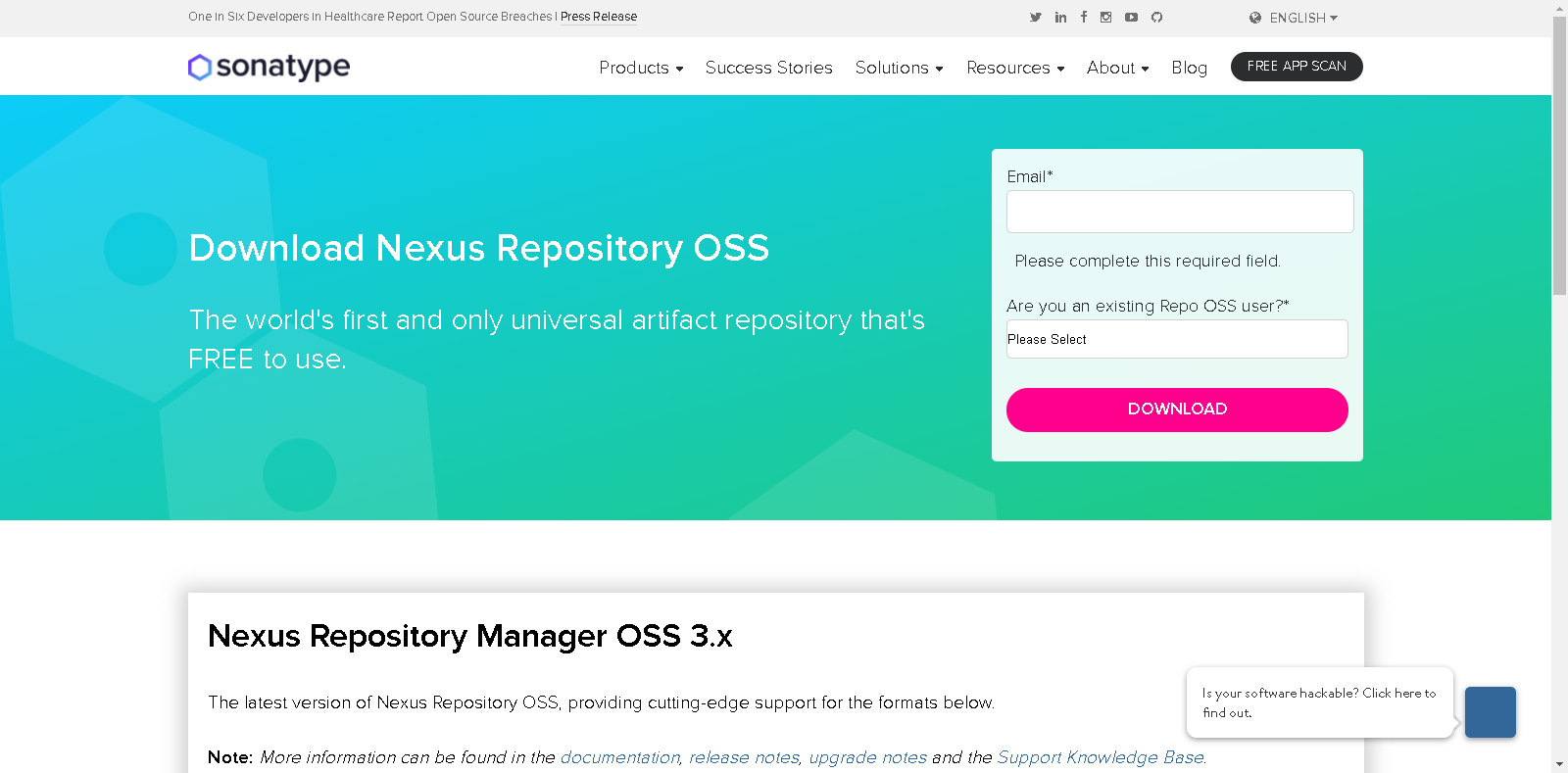
填入邮箱登录,需要注意的是Are you an existing Repo OSS user?*
- 这里第一次登录 选择NO
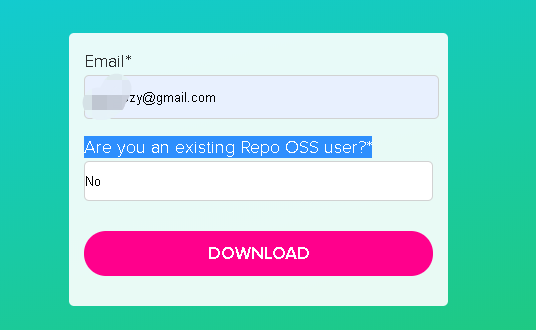
跳转到下载页面,选择相应的即可,我这里选择的是UNIX版的,
- 不过国内正常应该是下不来,这里贴下BDY吧: https://pan.baidu.com/s/1cKT6mXiWLsl_p326vTNKAQ 提取码: n5ht
- 如果需要其他版本的在下面评论看到就回

三、安装过程
我们下好的上传到root目录下,自己安装的时候注意目录
解压文件到/usr/local 下
tar -zxvf nexus-3.24.0-02-unix.tar.gz -C /usr/local
进入目录,添加软连接,验证

添加环境变量
vim /etc/profile

export NEXUS_HOME=/usr/local/nexus-3.24.0-02
刷新变量
source /etc/profile
修改root验证,不然会出现
WARNING: ************************************************************
WARNING: Detected execution as "root" user. This is NOT recommended!
WARNING: ************************************************************
修改方法
[root@localhost local]# cd /usr/local/nexus-3.24.0-02/bin/
[root@localhost bin]# vim nexus
把run_as_root=true改成run_as_root=false

启动nexus,进入目录
[root@localhost bin]# cd /usr/local/nexus-3.24.0-02/
前台启动
./bin/nexus console
后台进程启动
./bin/nexus start

启动成功访问一下 ip:8081,竟然还有.NET的NUGET

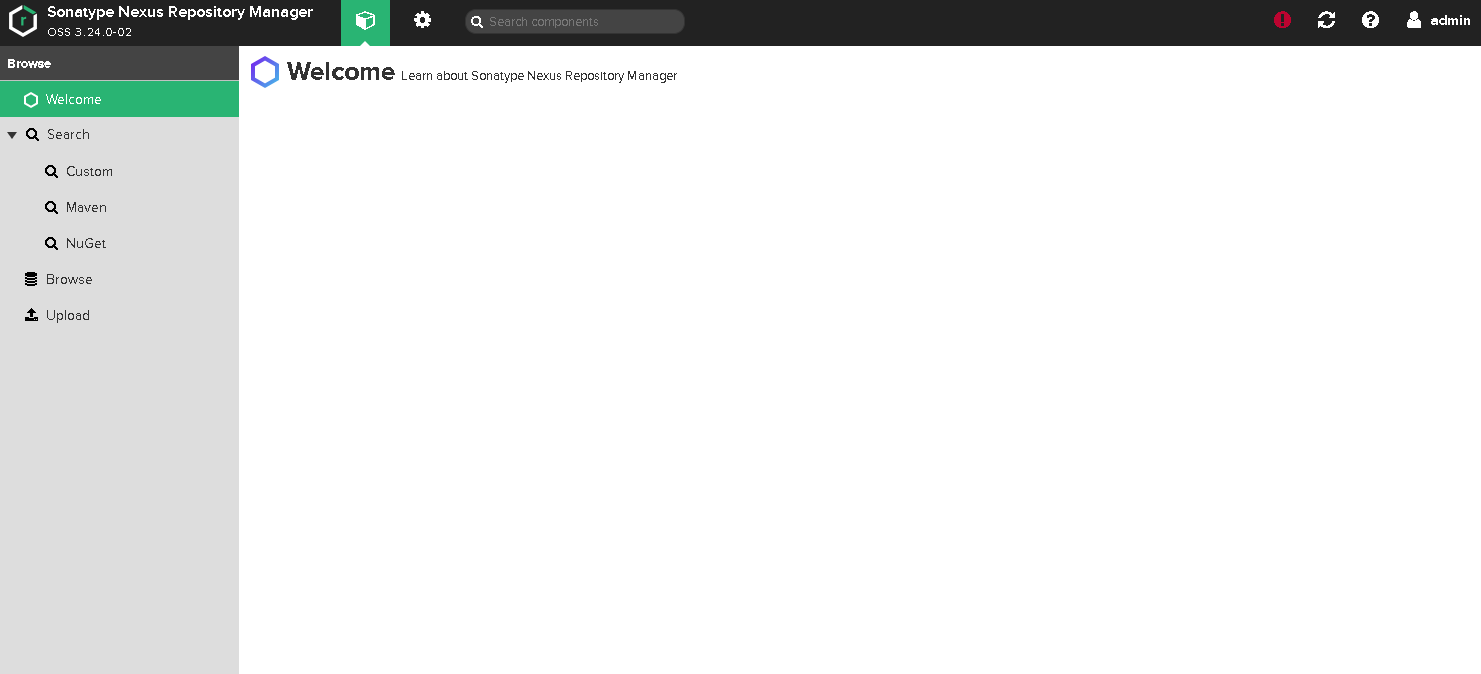
登陆一下 用户名:admin
- 密码:/usr/local/sonatype-work/nexus3/admin.password

修改密码

先选择匿名用户

环境安装成功
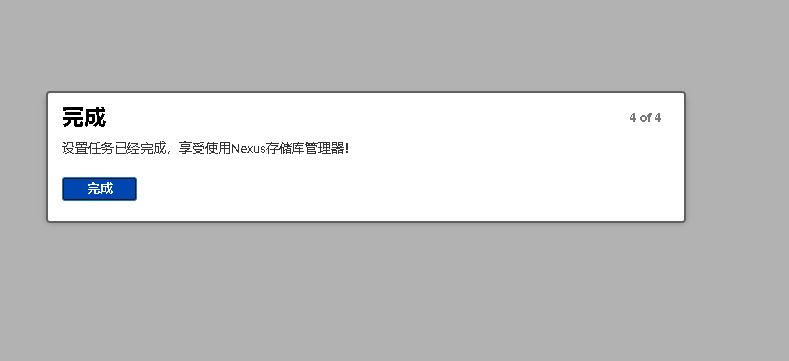
配置完毕启动登录后,
-
在 /support/status 状态页面的 File Descriptors 项目可能会显示 Recommended file descriptor limit is 65536 but count is 4096. 警告。
-
原因是 Nexus 3 将很有可能要消耗比 Linux 或 OSX 操作系统允许每个用户的默认文件句柄数(4096)更多的数量。

解决办法 修改文件打开最大限制,这里需要重启
[root@master ~]# vim /etc/security/limits.conf
# End of file
* soft nofile 65536
* hard nofile 65536
* soft nproc 131072
* hard nproc 131072
[root@master ~]# ulimit -Sn
[root@master ~]# ulimit -Hn
四、配置Nexus
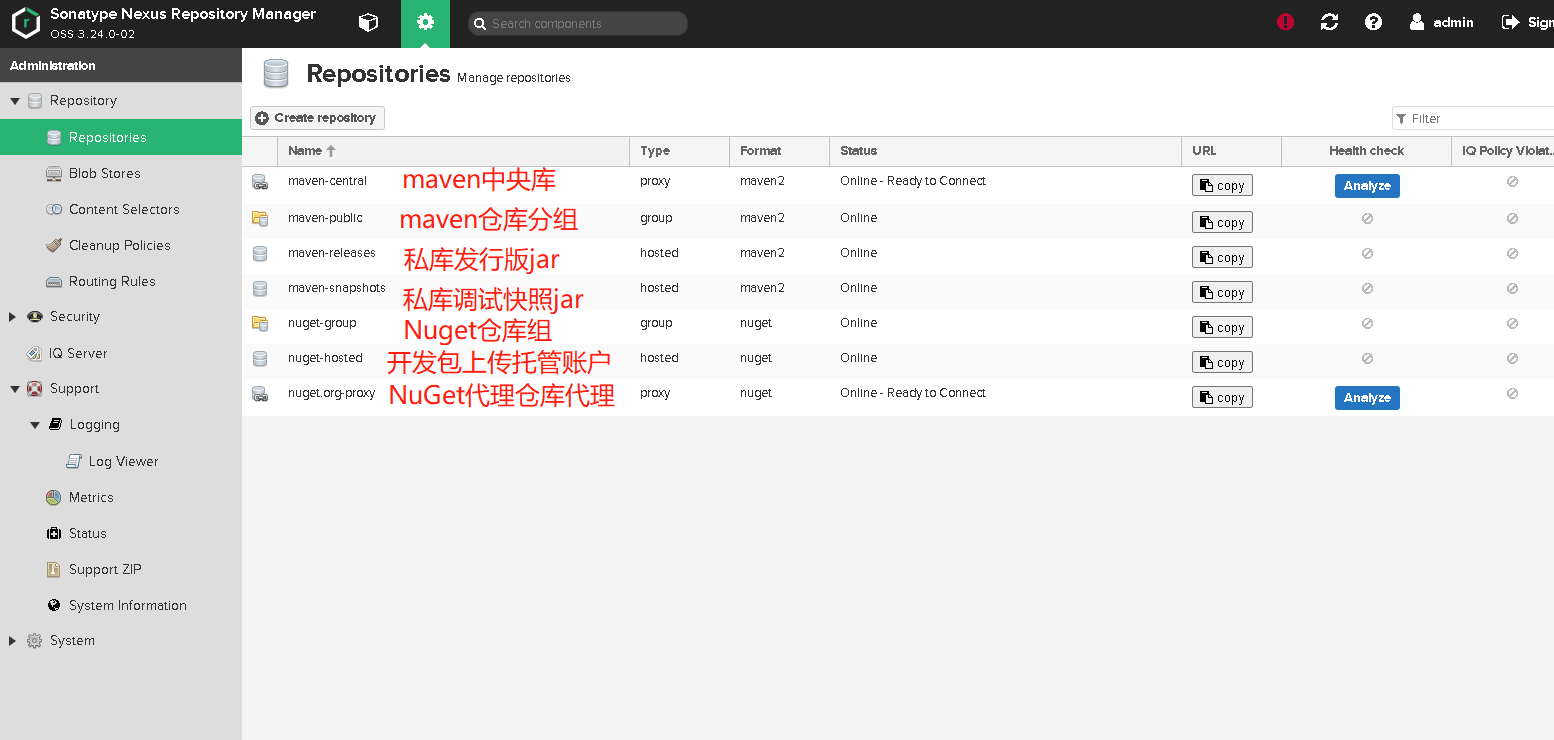
Maven用到的Repositories说明:
-
maven-central:maven中央库,默认从https://repo1.maven.org/maven2/拉取jar
-
maven-releases:私库发行版jar
-
maven-snapshots:私库快照(调试版本)jar
-
maven-public:仓库分组,把上面三个仓库组合在一起对外提供服务,在本地maven基础配置settings.xml中使用。
顺便提一下NuGet,等着有空再弄个NuGet吧
-
nuget.org-proxy,表示代理仓库。如果本地有这个包,它就从本地提供,如果本地没有,它会从nuget.org下载到本地,然后给我们提供这个包。
-
nuget-hosted,类型是hosted,表示托管仓库。我们一般把自己开发的包上传到该仓库中。
-
nuget-group,类型是group,表示仓库组,它结合了nuget.org-proxy和nuget-hosted,能对外提供上述两者中的包。
-
nuget-hosted负责包上传,nuget.org-proxy负责代理包,nuget-group负责提供包。Maven同理
如果不够用,自己也可以根据博文上面的仓库类型进行选用创建。
五、上传jar包到nexus
修改如下的配置,我这里以idea演示,
-
这里特别注意的是settings.xml和pom.xml的id需要匹配
-
首先去设置中查看Maven目录以及setting存放的位置
找到settings.xml,主要修改的地方

<server>
<id>releases</id>
<username>admin</username>
<password>password</password>
</server>
<server>
<id>snapshots</id>
<username>admin</username>
<password>password</password>
</server>
再找到pom.xml,需要修改的地方
<distributionManagement>
<repository>
<id>releases</id>
<name>releases</name>
<url>http://192.168.1.1:8081/repository/maven-releases/</url>
</repository>
<snapshotRepository>
<id>snapshots</id>
<name>snapshots</name>
<url>http://192.168.1.1:8081/repository/maven-snapshots/</url>
</snapshotRepository>
</distributionManagement>
然后Maven deploy

BUILD SUCCESS

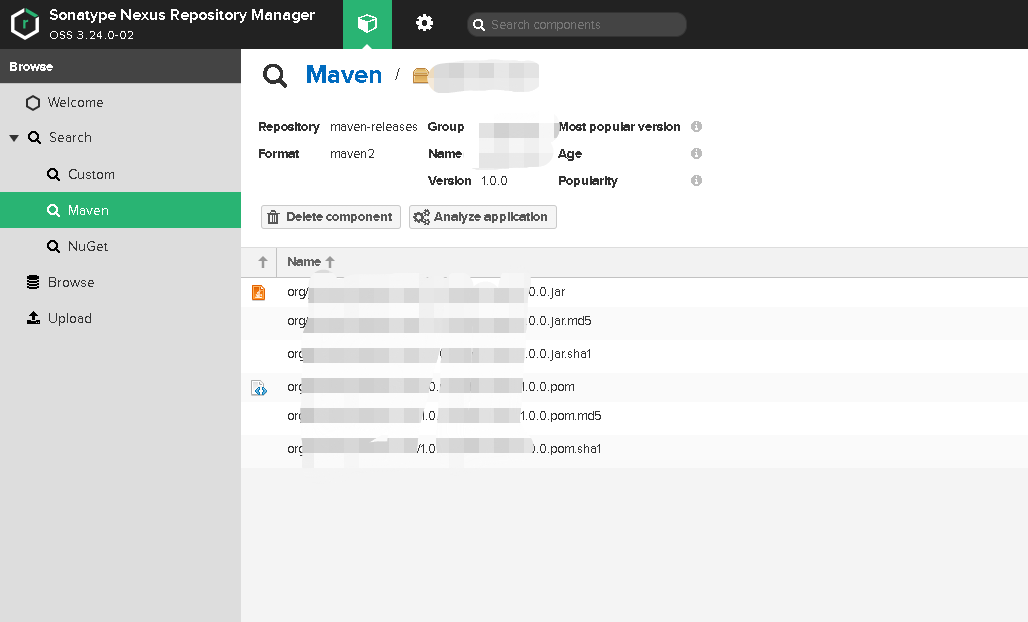
这里说下build出现的错误代码
-
Return code is: 405 检查上面两个配置地址,单词是否完全写对
-
Return code is: 401或者Return code is: 403 修改Nexus中Releases仓库默认的"Deployment Policy",将其修改为"Allow Redeploy"就ok了。
-
Return code is: 400 检查上面两个配置地址,单词是否完全写对
这里贴一下全部的settings.xml 仅供参考
<?xml version="1.0" encoding="UTF-8"?>
<!--
Licensed to the Apache Software Foundation (ASF) under one
or more contributor license agreements. See the NOTICE file
distributed with this work for additional information
regarding copyright ownership. The ASF licenses this file
to you under the Apache License, Version 2.0 (the
"License"); you may not use this file except in compliance
with the License. You may obtain a copy of the License at
http://www.apache.org/licenses/LICENSE-2.0
Unless required by applicable law or agreed to in writing,
software distributed under the License is distributed on an
"AS IS" BASIS, WITHOUT WARRANTIES OR CONDITIONS OF ANY
KIND, either express or implied. See the License for the
specific language governing permissions and limitations
under the License.
-->
<!--
| This is the configuration file for Maven. It can be specified at two levels:
|
| 1. User Level. This settings.xml file provides configuration for a single user,
| and is normally provided in ${user.home}/.m2/settings.xml.
|
| NOTE: This location can be overridden with the CLI option:
|
| -s /path/to/user/settings.xml
|
| 2. Global Level. This settings.xml file provides configuration for all Maven
| users on a machine (assuming they're all using the same Maven
| installation). It's normally provided in
| ${maven.home}/conf/settings.xml.
|
| NOTE: This location can be overridden with the CLI option:
|
| -gs /path/to/global/settings.xml
|
| The sections in this sample file are intended to give you a running start at
| getting the most out of your Maven installation. Where appropriate, the default
| values (values used when the setting is not specified) are provided.
|
|-->
<settings xmlns="http://maven.apache.org/SETTINGS/1.0.0"
xmlns:xsi="http://www.w3.org/2001/XMLSchema-instance"
xsi:schemaLocation="http://maven.apache.org/SETTINGS/1.0.0 http://maven.apache.org/xsd/settings-1.0.0.xsd">
<!-- localRepository
| The path to the local repository maven will use to store artifacts.
|
| Default: ${user.home}/.m2/repository
-->
<localRepository>D:Program Filesapache-maven-3.6.0conf
epository</localRepository>
<!-- interactiveMode
| This will determine whether maven prompts you when it needs input. If set to false,
| maven will use a sensible default value, perhaps based on some other setting, for
| the parameter in question.
|
| Default: true
<interactiveMode>true</interactiveMode>
-->
<!-- offline
| Determines whether maven should attempt to connect to the network when executing a build.
| This will have an effect on artifact downloads, artifact deployment, and others.
|
| Default: false
<offline>false</offline>
-->
<!-- pluginGroups
| This is a list of additional group identifiers that will be searched when resolving plugins by their prefix, i.e.
| when invoking a command line like "mvn prefix:goal". Maven will automatically add the group identifiers
| "org.apache.maven.plugins" and "org.codehaus.mojo" if these are not already contained in the list.
|-->
<pluginGroups>
<!-- pluginGroup
| Specifies a further group identifier to use for plugin lookup.
<pluginGroup>com.your.plugins</pluginGroup>
-->
</pluginGroups>
<!-- proxies
| This is a list of proxies which can be used on this machine to connect to the network.
| Unless otherwise specified (by system property or command-line switch), the first proxy
| specification in this list marked as active will be used.
|-->
<proxies>
<!-- proxy
| Specification for one proxy, to be used in connecting to the network.
|
<proxy>
<id>optional</id>
<active>true</active>
<protocol>http</protocol>
<username>proxyuser</username>
<password>proxypass</password>
<host>proxy.host.net</host>
<port>80</port>
<nonProxyHosts>local.net|some.host.com</nonProxyHosts>
</proxy>
-->
</proxies>
<!-- servers
| This is a list of authentication profiles, keyed by the server-id used within the system.
| Authentication profiles can be used whenever maven must make a connection to a remote server.
|-->
<servers>
<!-- server
| Specifies the authentication information to use when connecting to a particular server, identified by
| a unique name within the system (referred to by the 'id' attribute below).
|
| NOTE: You should either specify username/password OR privateKey/passphrase, since these pairings are
| used together.
|
-->
<server>
<id>release</id>
<username>admin</username>
<password>password</password>
</server>
<server>
<id>snapshots</id>
<username>admin</username>
<password>password</password>
</server>
<!-- Another sample, using keys to authenticate.
<server>
<id>release</id>
<privateKey>/path/to/private/key</privateKey>
<passphrase>optional; leave empty if not used.</passphrase>
</server>
-->
</servers>
<!-- mirrors
| This is a list of mirrors to be used in downloading artifacts from remote repositories.
|
| It works like this: a POM may declare a repository to use in resolving certain artifacts.
| However, this repository may have problems with heavy traffic at times, so people have mirrored
| it to several places.
|
| That repository definition will have a unique id, so we can create a mirror reference for that
| repository, to be used as an alternate download site. The mirror site will be the preferred
| server for that repository.
|-->
<mirrors>
<!-- mirror
| Specifies a repository mirror site to use instead of a given repository. The repository that
| this mirror serves has an ID that matches the mirrorOf element of this mirror. IDs are used
| for inheritance and direct lookup purposes, and must be unique across the set of mirrors.
|
<mirror>
<id>mirrorId</id>
<mirrorOf>repositoryId</mirrorOf>
<name>Human Readable Name for this Mirror.</name>
<url>http://my.repository.com/repo/path</url>
</mirror>
-->
</mirrors>
<!-- profiles
| This is a list of profiles which can be activated in a variety of ways, and which can modify
| the build process. Profiles provided in the settings.xml are intended to provide local machine-
| specific paths and repository locations which allow the build to work in the local environment.
|
| For example, if you have an integration testing plugin - like cactus - that needs to know where
| your Tomcat instance is installed, you can provide a variable here such that the variable is
| dereferenced during the build process to configure the cactus plugin.
|
| As noted above, profiles can be activated in a variety of ways. One way - the activeProfiles
| section of this document (settings.xml) - will be discussed later. Another way essentially
| relies on the detection of a system property, either matching a particular value for the property,
| or merely testing its existence. Profiles can also be activated by JDK version prefix, where a
| value of '1.4' might activate a profile when the build is executed on a JDK version of '1.4.2_07'.
| Finally, the list of active profiles can be specified directly from the command line.
|
| NOTE: For profiles defined in the settings.xml, you are restricted to specifying only artifact
| repositories, plugin repositories, and free-form properties to be used as configuration
| variables for plugins in the POM.
|
|-->
<profiles>
<!-- profile
| Specifies a set of introductions to the build process, to be activated using one or more of the
| mechanisms described above. For inheritance purposes, and to activate profiles via <activatedProfiles/>
| or the command line, profiles have to have an ID that is unique.
|
| An encouraged best practice for profile identification is to use a consistent naming convention
| for profiles, such as 'env-dev', 'env-test', 'env-production', 'user-jdcasey', 'user-brett', etc.
| This will make it more intuitive to understand what the set of introduced profiles is attempting
| to accomplish, particularly when you only have a list of profile id's for debug.
|
| This profile example uses the JDK version to trigger activation, and provides a JDK-specific repo.
<profile>
<id>jdk-1.4</id>
<activation>
<jdk>1.4</jdk>
</activation>
<repositories>
<repository>
<id>jdk14</id>
<name>Repository for JDK 1.4 builds</name>
<url>http://www.myhost.com/maven/jdk14</url>
<layout>default</layout>
<snapshotPolicy>always</snapshotPolicy>
</repository>
</repositories>
</profile>
-->
<!--
| Here is another profile, activated by the system property 'target-env' with a value of 'dev',
| which provides a specific path to the Tomcat instance. To use this, your plugin configuration
| might hypothetically look like:
|
| ...
| <plugin>
| <groupId>org.myco.myplugins</groupId>
| <artifactId>myplugin</artifactId>
|
| <configuration>
| <tomcatLocation>${tomcatPath}</tomcatLocation>
| </configuration>
| </plugin>
| ...
|
| NOTE: If you just wanted to inject this configuration whenever someone set 'target-env' to
| anything, you could just leave off the <value/> inside the activation-property.
|
<profile>
<id>env-dev</id>
<activation>
<property>
<name>target-env</name>
<value>dev</value>
</property>
</activation>
</profile>
-->
<profile>
<id>default_profile</id>
<repositories>
<!--包含需要连接到远程仓库的信息 -->
<repository>
<!--远程仓库唯一标识 -->
<id>zhanglonghao_repo</id>
<!--远程仓库名称 -->
<name>zhanglonghao_repo</name>
<!--如何处理远程仓库里发布版本的下载 -->
<releases>
<!--true或者false表示该仓库是否为下载某种类型构件(发布版,快照版)开启。 -->
<enabled>true</enabled>
<!--该元素指定更新发生的频率。Maven会比较本地POM和远程POM的时间戳。这里的选项是:always(一直),daily(默认,每日),interval:X(这里X是以分钟为单位的时间间隔),或者never(从不)。 -->
<updatePolicy>never</updatePolicy>
<!--当Maven验证构件校验文件失败时该怎么做-ignore(忽略),fail(失败),或者warn(警告)。 -->
<checksumPolicy>warn</checksumPolicy>
</releases>
<!--如何处理远程仓库里快照版本的下载。有了releases和snapshots这两组配置,POM就可以在每个单独的仓库中,为每种类型的构件采取不同的策略。例如,可能有人会决定只为开发目的开启对快照版本下载的支持。参见repositories/repository/releases元素 -->
<snapshots>
<!--true或者false表示该仓库是否为下载某种类型构件(发布版,快照版)开启。 -->
<enabled>true</enabled>
<!--该元素指定更新发生的频率。Maven会比较本地POM和远程POM的时间戳。这里的选项是:always(一直),daily(默认,每日),interval:X(这里X是以分钟为单位的时间间隔),或者never(从不)。 -->
<updatePolicy>always</updatePolicy>
<!--当Maven验证构件校验文件失败时该怎么做-ignore(忽略),fail(失败),或者warn(警告)。 -->
<checksumPolicy>warn</checksumPolicy>
</snapshots>
<!--远程仓库URL,按protocol://hostname/path形式 -->
<url>http://ip:8081/repository/maven-public/</url>
<!--用于定位和排序构件的仓库布局类型-可以是default(默认)或者legacy(遗留)。Maven 2为其仓库提供了一个默认的布局;然而,Maven 1.x有一种不同的布局。我们可以使用该元素指定布局是default(默认)还是legacy(遗留)。 -->
<layout>default</layout>
</repository>
</repositories>
<pluginRepositories>
<pluginRepository>
<id>maven-net-cn</id>
<name>Maven China Mirror</name>
<url>http://ip:8081/repository/maven-public/</url>
<releases>
<enabled>true</enabled>
</releases>
<snapshots>
<enabled>true</enabled>
</snapshots>
</pluginRepository>
</pluginRepositories>
</profile>
</profiles>
<!-- activeProfiles
| List of profiles that are active for all builds.
-->
<activeProfiles>
<activeProfile>default_profile</activeProfile>
</activeProfiles>
</settings>